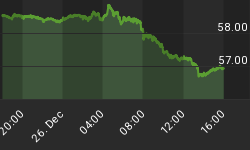After the close on December 20 with the S&P 500 standing at 1,247, we performed an analysis which led to the conclusion bullish stock market sentiment was not a barrier to further stock gains. Since then, the S&P 500 has gained 3.12% and the Investors Intelligence Advisory Sentiment Bull/Bear Ratio has increased from 2.77 to 3.00. With valuations and market technicals currently stretched, it is a good time to revisit the possible role of sentiment in the weeks ahead.
Stock market sentiment relative to a bullish or bearish outlook can be used as a contrary indicator for stock prices when it reaches extremes. We, like many familiar with the power of using sentiment, have been concerned in recent weeks as the percentage of bulls increased relative to the percentage of bears.
The December 20 analysis used a chart supplied by Robert W. Colby (www.robertwcolby.com), author of The Encyclopedia of Technical Market Analysis. In this updated analysis, we added the green lines and blue arrows to Mr. Colbys chart, which show periods where sentiment rose from depressed levels (blue arrows) to elevated levels similar to what we have today (top portion of green lines). The Bull/Bear ratio currently stands at 3.00 (see green arrow upper right). The Dow Jones Industrial Average is shown at the bottom, below the blue arrows.

Unlike the December 20 results, the stock markets performance following the four similar periods between 2002 and 2011 is a mixed bag. We took Robert W. Colbys chart (above) and calculated the markets historical risk-reward profile for the cases highlighted with blue arrows and green lines from 2003, 2004, 2007 (two cases), and 2009.
The table below shows the S&P 500s performance between two weeks and six months after sentiment rose from very depressed levels to a bull/bear ratio of 3.00. Roughly 42% of the outcomes for stocks were favorable; roughly 28% were unfavorable (but not enough to warrant selling), and about 30% of the cases resulted in S&P 500 losses of 3% or more.

As investors, what we should care about is how the market behaved after similar circumstances in the past. We need to examine the magnitude and frequency of the bullish outcomes relative to the magnitude and frequency of the bearish outcomes to better understand the risk-reward profile of the current market as it relates to sentiment. The table below tells us the outlook, based on sentiment, for the next six months is unfavorable from a risk-reward perspective.

In the cases studied, the two occurrences in 2007 are probably the least similar to the present day in terms of other factors, such as interest rate and market cycles. The cases in 2003 and 2009 are also not that similar to the present day since they occurred in the first year of new bull markets. The 2004 case, while far from a good match, aligns best with current circumstances. In 2004 after the Investors Intelligence Advisory Sentiment Bull/Bear Ratio hit 3.00, stocks basically tread water for three months, then experienced a decent pullback. From a risk-reward perspective, stocks were barely higher six months later.
Used in isolation, sentiment can be a difficult timing tool, especially on the bullish end of the spectrum. As outlined on January 6, areas for a possible intermediate-term reversal include S&P 500 levels of 1,280, 1,283, 1,291, 1,298, 1,314, and 1,326. In a recent projection of the current market technicals, we guesstimated two time windows where stocks could run into some headwinds; 01/21/10 - 02/02/10, and 02/03/10 - 02/11/10.
















